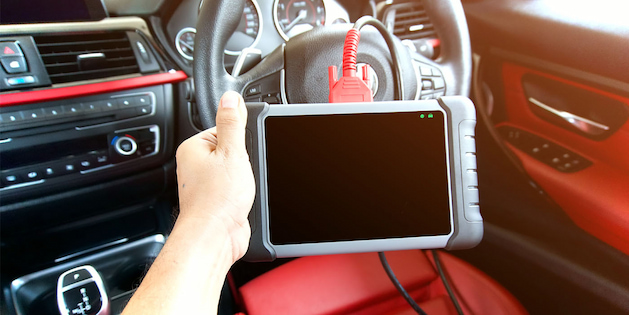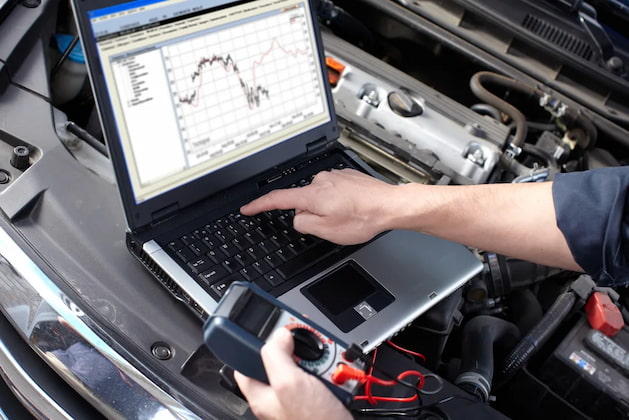Electronics have worked wonders in cars. Our appetites as drivers and consumers have certainly changed, as we look for more convenience, comfort and performance when out on the road. And countless electronic systems are at our disposal to make driving a more pleasant experience. Even when things go wrong. At the core of all that complex wiring and gadgetry is your car’s ECU. It is tasked to maintain all systems to work as they should, and inform drivers of any faults.
This is done by a slew of warning lights in the instrument cluster. But do you really know what’s going on when the “check engine” light pops up? To take out the guesswork, companies that developed many of the first electronic systems, also put in the work to configure vehicle diagnostics tools. They’ve been recently joined by other brands that specialise in all things ECU.
What are OBD tools?
On-board diagnostic tools were first developed in the late1980s to read the data collected by the car’s ECU or on-board computer. This works by a series of sensors in different car systems that relay information back to the onboard computer. This information is stored as a set of codes. If the ECU detects that the signals and codes are not within normal parameters. It records this as a Diagnostic Trouble Code or DTC. This essentially is a list of letters and numbers to pinpoint where the fault is and the nature of the fault. With the fault reported, the onboard computer then sends a signal to the Malfunction Indicator Lights to warn drivers. Lights that turn on and stay on indicate a minor problem, whereas those that flicker call for urgent attention.
All this information can be accessed by the Diagnostic Link Connector or DLC, otherwise known as an OBD port, usually located under the dash, either to the left or right of the steering wheel. A vehicle diagnostic tool connects to this port and helps drivers and mechanics in fixing the issue. The first ports, OBD I, were manufacturer-specific and caused more confusion and complexity. This led to the standardised OBD II ports in use today, and the same across all vehicles.
Types of Vehicle Diagnostic Tools
A vehicle diagnostic tool can be either a code reader or a scanner. Code readers are the cheaper of the two, and simply display DTC codes with the option of clearing. Scanners offer more functionality. They not only read and clear codes like basic code readers, but also provide in-depth information relating to generic or manufacturer specific codes, give troubleshooting tips, can record and playback live data and more. Historical data, like trip information, average fuel consumption, and previous issues are also recorded and accessible. Drivers will be more than satisfied with an advanced code reader or entry-level scanner to inform of common issues, while technicians and mechanics should opt for pricier and feature-laden scanners. The goal is to quickly determine vehicle faults and get them fixed.
Features to Look for
Vehicle diagnostic code readers and scanners are mostly small handheld units with digital displays. They should provide easy-to-read data and have multiple stored trouble codes for a variety of car brands and vehicle types. Scanners offer higher resolution colour screens (some with touchscreen capability), and physical buttons for quick scanning and going through menus. More up-scale scanners come in tablet form and have Bluetooth and Wi-Fi connectivity to scan vehicles wirelessly and automatically download new or updated codes.
Interpreting OBDII Codes
OBD I codes were used until 1996 and were related to emissions faults in specific car makes. Standardised OBD II (or OBD-II/OBD2) features a series of letters and numbers to pinpoint faults across all vehicles. Letters come first. They can signal issues with the Body (B), Chassis (C), Powertrain (P), or a communications fault (U). Next come a series of numbers. The first number after the letter is either a 0, in which case there is a generic code, or 1 a manufacturer specific code. The next number identifies the vehicle system in which the fault is located. 1 refers to the fuel and air metering, 2 the fuel injector circuitry, 3 the ignition, 4 the exhaust and emissions, 5 the idle or cruise control, 6 – the ECU and auxiliary outputs, and 7 and 8 the transmission. The last two numbers define the exact code in question. For example, a code reader or scanner that displays the code P0300 informs that there is a generic issue with the powertrain and ignition. A more specific code like P0303 informs that there is ignition misfiring in cylinder 3.
Can Vehicle Diagnostic Tools be Used by Anyone?
Yes. The benefit of even a basic code reader is that it allows drivers to be informed of a potential problem and the nature of that problem, before it escalates into something more serious. They also let you gauge those findings to what your mechanic has found, so can save money from unnecessarily expensive repairs. These are worthy tools to diagnose issues early on and also fix common ECU faults, while the related systems may be perfectly fine. In the hands of trained technicians and mechanics, vehicle diagnostic tools allow for easy pinpointing issues and repairing vehicles quicker.





